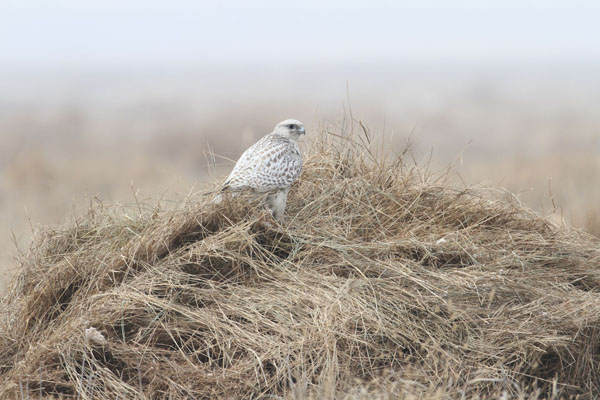Falco rusticolus
IUCN
LCBasic Information
Scientific classification
- name:Falco rusticolus
- Scientific Name:Gyrfalcon, White Falcon
- Outline:Raptor
- Family:Falconiformes Falconidae Falco
Vital signs
- length:60cm
- Weight:1000-2150g
- lifetime:20-25year
Feature
The Nordic country of Iceland has designated the gyrfalcon as its national bird, and has placed a silver-white gyrfalcon on its national emblem. The white gyrfalcon is extremely rare and precious, and is a very beautiful bird of prey.
Distribution and Habitat
It is extremely rare in China, occasionally seen in Northeast China and North China in winter, and has a relatively stable record in the Altay region of Xinjiang. Abroad, it breeds in the tundra of the circumpolar Arctic region and migrates south of the breeding area in winter. It is distributed in North America, Northern Europe, western and northern Asia.
The gyrfalcon lives in the Arctic tundra and cold temperate zones. It inhabits open rocky mountains, coastal islands, river valleys near the coast, and forest tundra areas.
Appearance
The gyrfalcon is a medium-sized bird of prey. It is a very large white, black or brown falcon. Both sexes are the same. It has no obvious wing fingers. A robust individual may be over 60 cm long and weigh over 2 kg. The light-colored adult is snow-white with black spots on the upper body, which is unforgettable. The dark-colored adult is black-gray with some vertical white spots on the chest and abdomen. There is also a gray gyrfalcon that is very similar to the dark-colored falcon. Immature birds are mostly clean brown-brown with vertical stripes similar to those of immature falcons. The foot color is gray, unlike the yellow feet of adults. The difference between the gray gyrfalcon and the falconer is that the wing tip of this species reaches 2/3 of the tail when it lands, while the wing tip of the falconer is only slightly shorter than the tail end. In addition, the gray gyrfalcon often has stripes on the undertail coverts, the cheeks are darker, and the sideburns are often not as ob
Details
The gyrfalcon is a species of falcon. It has a strong beak and feet with sharp hooks, which are adapted to catching and tearing prey. The base of the beak is covered with wax; the wings are strong and powerful, and it is good at flying and soaring. The skull is cord-shaped. The feet and toes are strong and powerful, usually 3 toes facing forward and 1 toe facing backward, forming an unequal toe type. The skull is wide, the upper orbital bones are enlarged, the eyeballs are large, the field of vision is wide, the vision is sharp, and the hearing is well developed. In a few high-altitude areas in Iceland with ice and snow, the gyrfalcon will appear white in order to adapt to the environment, so it is also called the white falcon.

They feed mostly on small and medium-sized birds, and also catch rodents and mammals. In some habitats, they mainly prey on wild ducks, gulls, ptarmigan, and grouse, which can account for up to 92% of the total food by weight. According to a survey of the diet of gyrfalcons on an island, of the 702 prey items, 408 were birds, 262 were mammals, and there were 4 fish, 2 frogs, and 26 insects. Gyrfalcons living along the coastline mainly prey on gulls, ducks, and puffins, but they also catch ptarmigan, and their pellets often contain a whole set of undigested bird claws. In the season when there are many lemmings, they also prey on lemmings in large numbers. In some areas, curlews will become the preferred staple food of this species. Occasionally, they also eat carrion.
The breeding season of the gyrfalcon is from May to July. It nests on the rocks on the cliffs of the Arctic coast and nearby river valleys, and occasionally on trees in the Arctic tundra forest area. The nest is flat and has a rough structure, mainly made of dead branches. The chicks are late-maturing. After hatching, they are raised by the parents together and can leave the nest after about 46-49 days. During the breeding period, the female parents will not leave the male, and the male will not leave the female.
The gyrfalcon is fierce and agile. It can hunt birds flying in the air and subdue beasts running on the ground. There are even records of catching deer. Due to its strong fighting power, this species is a star species in falconry activities and is often illegally captured and sold.
The first need of life is survival. Every species has the right to protect its own survival. For each of us, we should start with ourselves. Respecting life is respecting humanity itself.








